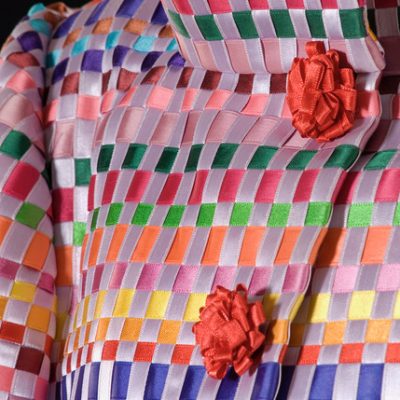
Designers 15.04.2021
05.07.2022
1960sEuropean fashionfashion history
A Provocative Blouson by Paco Rabanne in the collection of the Germanisches Nationalmuseum, narrated by Dr. Adelheid Rasche
The Germanisches Nationalmuseum in Nuremberg, Germany, recently acquired a rare Paco Rabanne blouson from the Autumn/Winter Collection 1967/68, made of discs of orange calf leather and aluminium triangles. The only seams are to be found on the front, to attach the zip fastener; all other elements have been fixed with the help of rivets. Paco Rabanne constructed the blouson starting from small pieces – just the opposite of normal dressmaking where a big piece of textile is cut into parts to create a pattern.
Both materials – leather and metal – have a long tradition in dress history, and have been mainly used for protection against military attacks and climate inconveniences. When Paco Rabanne decided to go for these hard materials for a woman’s outergarment, he wanted to offer women a protective piece of armour against the challenges of modern everyday life.
The blouson – a jacket which came into life during the 1920ies for American Air Force pilots – developed into a fashionable garment for young rebel teenagers in the 1950ies. To dress women in this type of jacket was still quite provocative in 1967! French magazine “Elle” showed a black and white version worn by super model Twiggy – entitled “Twiggy Miss Motard” (Miss Motor-cycling).
Paco Rabanne (born 1934), Spanish born and a trained architect, became one of the most innovative fashion designers in Paris, where he presented his first collection in February 1966 with “12 unwearable dresses in contemporary materials”. Over the following years he used uncommon materials like hammered metal, aluminium jersey or plastic elements to create his sculptural and highly innovative pieces with a geometrical and modular surface. The modern technical solutions of this “Jules Verne of Fashion”, as the was deemed by the press, are unequalled until today. A detailed study with more images has been published on the Museum website (in German).
**This text was written by Dr. Adelheid Rasche, Senior Curator of Textiles, Dress and Jewellery at the Germanisches Nationalmuseum, Nuremberg, Germany.